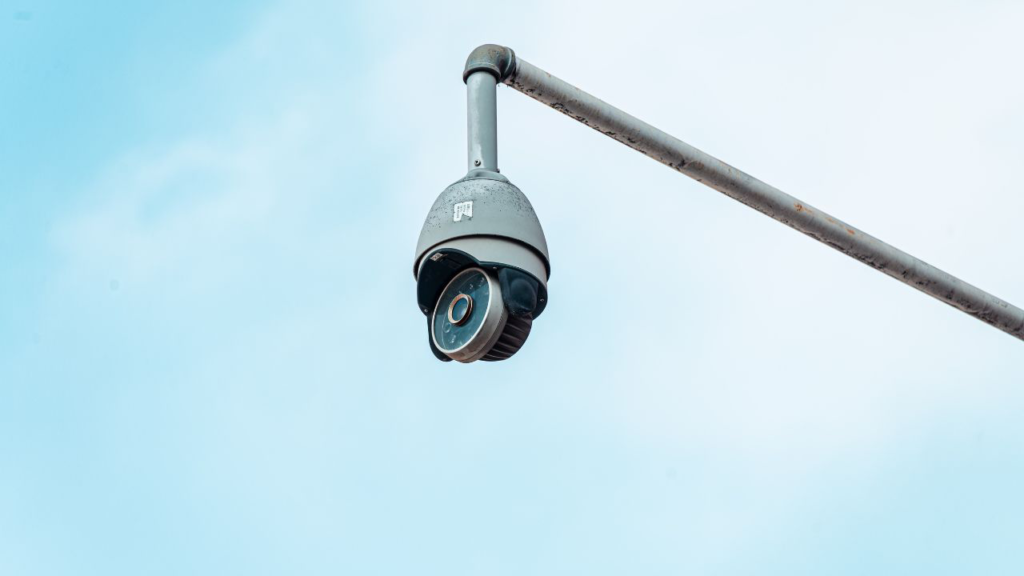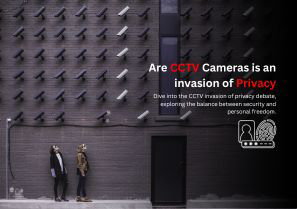
CCTV, which stands for Closed Circuit Television, is a powerful video surveillance system that has become an integral part of our lives. This comprehensive guide will provide you with a deep understanding of CCTV technology, its uses, benefits, and how it works. Whether you are new to CCTV or looking to enhance your knowledge, this article will serve as your ultimate resource.
Now, let’s delve into each section of the guide in detail, exploring the fascinating world of CCTV technology, its applications, benefits, and the future of this rapidly evolving field.
Introduction to CCTV
What is CCTV?
CCTV, or Closed Circuit Television, is a video surveillance system that utilizes strategically placed cameras to capture and transmit video signals to a specific set of monitors or recording devices. Unlike traditional television broadcasting, CCTV signals are not publicly distributed but are monitored privately for security and surveillance purposes.
CCTV technology has evolved over the years, incorporating advancements in camera technology, video recording, storage, and networking. Today, CCTV systems are widely used in various settings to enhance security, monitor activities, and provide valuable evidence in investigations.
Evolution of CCTV Technology.
The origins of CCTV can be traced back to the mid-20th century, when the first closed-circuit television systems were developed for surveillance purposes. The early CCTV systems consisted of analog cameras connected to dedicated monitors and recording devices.
With the advent of digital technology, CCTV systems underwent a significant transformation. Analog cameras were gradually replaced by digital cameras, offering higher image quality, improved resolution, and advanced features such as night vision and motion detection.
The introduction of network-based CCTV systems further revolutionized the industry. IP cameras, capable of transmitting video over computer networks, opened up new possibilities for remote monitoring, scalability, and integration with other security systems.
The Importance of CCTV in Society.
CCTV has become an essential tool in maintaining public safety, deterring criminal activities, and providing valuable evidence in investigations. It is widely used in various sectors, including law enforcement, transportation, retail, banking, healthcare, and residential security.
CCTV systems help prevent crimes by acting as a visible deterrent. Potential criminals are less likely to target an area under constant surveillance, knowing that their actions are being recorded. In case of an incident, CCTV footage can assist in identifying suspects, reconstructing events, and supporting legal proceedings.
Moreover, CCTV has proven to be effective in traffic monitoring and management, enabling authorities to detect congestion, enforce traffic regulations, and respond quickly to accidents or emergencies. It also plays a crucial role in industrial settings, ensuring worker safety, monitoring hazardous environments, and preventing unauthorized access.
As CCTV technology continues to advance, it is expected to play an even more significant role in public safety, crime prevention, and overall security.

Components of a CCTV System.
A CCTV system is composed of several key components that work together to capture, transmit, record, and display video footage. Understanding these components is essential to design and deploy an effective CCTV system tailored to specific requirements.
CCTV Cameras
Security cameras, also known as CCTV cameras, are the primary devices used to capture video footage in a surveillance system. They come in various types and form factors, each designed for specific purposes and environments.
- Analog Cameras: These cameras use analog technology to capture video and transmit it over coaxial cables. They are compatible with traditional analog CCTV systems but offer limited resolution and features compared to digital cameras.
- Digital Cameras: Digital cameras capture video in a digital format, providing higher resolution, better image quality, and advanced features such as night vision, motion detection, and remote access. They often utilize IP technology for transmission.
- IP Cameras: IP cameras, also known as network cameras, are digital cameras that connect directly to computer networks. They use IP (Internet Protocol) technology to transmit video data, allowing for remote monitoring, scalability, and integration with other network-based systems.
- PTZ Cameras: PTZ (Pan-Tilt-Zoom) cameras offer flexibility in monitoring and control. They can pan (move horizontally), tilt (move vertically), and zoom in or out to capture specific areas or objects. PTZ cameras are often used in large areas that require active surveillance.
Cables and Connectors
Cables and connectors play a crucial role in transmitting video signals from cameras to recording devices or monitors. The choice of cables depends on the type of cameras and the distance between them and the recording equipment.
- Coaxial Cables: Coaxial cables, such as RG59 or RG6, are commonly used with analog cameras. They provide a reliable and cost-effective solution for transmitting video signals over moderate distances.
- Ethernet Cables: Ethernet cables, such as CAT5e or CAT6, are used in network-based CCTV systems. They carry both video and data signals, allowing for high-speed transmission and remote access. Power Over Ethernet (PoE) technology can also be utilized to provide power to IP cameras over the same cable.
- Connectors: BNC (Bayonet Nut Coupling) connectors are commonly used with coaxial cables in analog CCTV systems. RJ45 connectors are used with Ethernet cables in network-based CCTV systems.
Video Recorders
Video recorders are responsible for capturing, storing, and managing video footage from CCTV cameras. They come in different types, each offering unique features and capabilities.
- Digital Video Recorders (DVR): DVRs are commonly used with analog cameras. They convert analog video signals into digital format, compress and store the footage on internal hard drives. DVRs offer various recording modes, remote access, and playback functionalities.
- Network Video Recorders (NVR): NVRs are used with IP cameras in network-based CCTV systems. They receive digital video data from IP cameras and store it on internal or external storage devices. NVRs offer advanced features such as remote access, intelligent video analytics, and integration with other network-based systems.
Read more about Digital video recorders (DVR) and Network video recorders (NVR)
Storage Units
Storage units, such as hard disk drives or network-attached storage (NAS), are used to store video footage captured by CCTV cameras. The size and capacity of the storage unit depend on the recording duration and the number of cameras in the system.
Modern CCTV systems often employ advanced storage technologies, such as RAID (Redundant Array of Independent Disks), to ensure data redundancy, fault tolerance, and high-performance recording.
Display Units
Display units, such as monitors or video walls, are used to view live or recorded video footage from CCTV cameras. They provide visual feedback, allowing operators to monitor activities, detect potential threats, and review recorded incidents.
The choice of display units depends on the size of the surveillance area, the number of cameras, and the desired level of detail. Large-scale installations may utilize video walls, consisting of multiple monitors arranged in a grid, to provide a comprehensive view of the surveillance area.
In the next section, we will explore the different types of CCTV cameras and their specific applications.

Types of CCTV Cameras.
CCTV cameras come in various types and form factors, each designed for specific purposes and environments. Understanding the different types of cameras will help you choose the most suitable ones for your surveillance needs.
Analog CCTV Cameras
Analog cameras are the traditional CCTV cameras that use analog technology to capture and transmit video signals. They are compatible with analog CCTV systems and offer a cost-effective solution for basic surveillance requirements.
Analog cameras come in different types, including bullet cameras, dome cameras, and PTZ cameras. Bullet cameras are typically used for outdoor surveillance, while dome cameras are more discreet and suitable for indoor applications. PTZ cameras offer the ability to pan, tilt, and zoom, allowing for active monitoring and control.
Analog cameras have limitations in terms of image quality, resolution, and advanced features compared to digital cameras. However, they are still widely used in many applications where high-resolution imaging is not a primary requirement.Digital CCTV Cameras
Digital cameras, also known as network cameras, capture video in a digital format and transmit it over computer networks. They offer several advantages over analog cameras, including higher resolution, better image quality, and advanced features.
Digital cameras utilize IP (Internet Protocol) technology to transmit video data, allowing for remote monitoring, scalability, and integration with other network-based systems. They can be powered over Ethernet (PoE), eliminating the need for separate power cables.
Digital cameras are available in different types, such as fixed cameras, PTZ cameras, dome cameras, and specialty cameras. They offer features like high-definition imaging, wide dynamic range (WDR), infrared (IR) night vision, and intelligent video analytics.IP CCTV Cameras
IP cameras, or Internet Protocol cameras, are a type of digital camera that connects directly to computer networks. They use IP technology to transmit video data, enabling remote access and control. IP cameras offer several advantages over analog cameras and are commonly used in modern CCTV systems.
One of the key advantages of IP cameras is their ability to capture high-resolution images, allowing for greater detail and clarity in video footage. They also offer advanced features such as wide dynamic range (WDR), low-light performance, and intelligent video analytics.
IP cameras can be wired or wireless, depending on the infrastructure and requirements of the surveillance system. They can be powered over Ethernet (PoE), simplifying installation and reducing cable clutter.PTZ CCTV Cameras
PTZ cameras, or Pan-Tilt-Zoom cameras, offer flexibility in monitoring and control. They can pan (move horizontally), tilt (move vertically), and zoom in or out to capture specific areas or objects of interest. PTZ cameras are often used in large areas that require active surveillance.
PTZ cameras can be either analog or digital, with digital PTZ cameras offering greater precision and control. They can be controlled manually or programmed to follow predefined patterns or sequences. Some PTZ cameras also offer auto-tracking capabilities, where they automatically track moving objects or individuals.
PTZ cameras are commonly used in applications such as perimeter surveillance, parking lots, stadiums, and large-scale installations where active monitoring is required.
In the next section, we will explore the network infrastructure required for CCTV systems, including wired and wireless options, as well as Power over Ethernet (PoE) technology.

CCTV Network Infrastructure.
The network infrastructure plays a crucial role in the performance, scalability, and reliability of a CCTV system. It determines how video data is transmitted, managed, and accessed across the surveillance network.
Wired Infrastructure
- A wired infrastructure is the most common and reliable option for CCTV systems. It utilizes cables to transmit video signals and power between cameras, recorders, and other network devices. The choice of cables depends on the type of cameras and the distance between them and the recording equipment.
- Coaxial cables, such as RG59 or RG6, are commonly used in analog CCTV systems. They provide a reliable and cost-effective solution for transmitting video signals over moderate distances. Coaxial cables are compatible with BNC connectors, which ensure a secure and stable connection.
- Ethernet cables, such as CAT5e or CAT6, are used in network-based CCTV systems. They carry both video and data signals, allowing for high-speed transmission and remote access. Ethernet cables are compatible with RJ45 connectors, which provide a standardized connection interface.
- Wired infrastructure offers several advantages, including higher bandwidth, greater reliability, and immunity to electromagnetic interference. It is suitable for installations where a stable and secure connection is required, such as critical infrastructure, commercial buildings, and large-scale surveillance networks.
Wireless Infrastructure
- Wireless infrastructure provides a flexible and scalable solution for CCTV systems, eliminating the need for physical cables and allowing for easier installation and relocation of cameras. It utilizes wireless communication technologies to transmit video signals between cameras, recorders, and other network devices.
- Wireless CCTV systems use radio frequencies or Wi-Fi technology to establish wireless connections. They are suitable for small to medium-sized installations, temporary setups, or areas where running cables is impractical or costly.
- Wireless infrastructure offers several advantages, including easy deployment, flexibility in camera placement, and reduced installation costs. However, it is susceptible to signal interference, limited bandwidth, and potential security vulnerabilities. Proper planning, site surveys, and network optimization are essential to ensure reliable and secure wireless communications.
Power Over Ethernet (PoE)
- Power over Ethernet (PoE) technology provides a convenient solution for powering IP cameras and other network devices over the same Ethernet cable used for data transmission. It eliminates the need for separate power cables, simplifying installation and reducing cable clutter.
- PoE uses the existing Ethernet infrastructure to deliver power to PoE-enabled devices, such as IP cameras, wireless access points, and network switches. It utilizes a PoE injector or PoE switch at the power source, injecting power into the Ethernet cable. The PoE-enabled devices receive power through the same cable, eliminating the need for additional power outlets.
- PoE offers several benefits, including flexibility in camera placement, cost savings on power infrastructure, and centralized power management. It is particularly useful in installations where power outlets are limited, or where cameras need to be installed in remote or hard-to-reach locations.
- In the next section, we will explore the recording and storage options available in CCTV systems, including digital video recorders (DVRs) and network video recorders (NVRs).

CCTV Recording and Storage.
Recording and storing video footage is a critical aspect of any CCTV system. It allows for the capture and retrieval of video data, providing evidence, and facilitating investigations. CCTV systems utilize various recording and storage devices to meet specific requirements.
Digital Video Recorders (DVR)
- Digital Video Recorders (DVRs) are commonly used in analog CCTV systems. They are responsible for converting analog video signals into digital format, compressing and storing the footage on internal hard drives.
DVRs offer several recording modes, including continuous recording, scheduled recording, motion-triggered recording, and alarm-based recording. They provide flexibility in storage capacity, allowing for the addition of multiple hard drives or external storage devices.
DVRs often come with advanced features such as remote access, live viewing, playback, and backup functionalities. They can be accessed through a dedicated monitor, web browser, or mobile app, providing convenient access to video footage from anywhere, at any time.
Network Video Recorders (NVR)
- Network Video Recorders (NVRs) are used in network-based CCTV systems, particularly with IP cameras. They receive digital video data from IP cameras and store it on internal or external storage devices.
NVRs offer advanced features and capabilities compared to DVRs. They provide higher resolution recording, support for multiple video codecs, and intelligent video analytics. NVRs can be accessed remotely through a web browser or mobile app, allowing for remote monitoring, playback, and configuration.
NVRs often come with built-in PoE ports, simplifying the installation and connection of PoE-enabled IP cameras. They can also integrate with other network-based systems, such as access control or alarm systems, for enhanced security and automation.
Video Compression Techniques
Video compression is a crucial aspect of CCTV systems, as it allows for efficient storage and transmission of video data. Compression techniques reduce the size of video files without significant loss of image quality, making it feasible to store and transmit large amounts of video data.
Common video compression standards used in CCTV systems include:
- H.264: H.264, also known as Advanced Video Coding (AVC), is a widely adopted video compression standard. It provides high-quality video compression with lower bitrates, reducing storage requirements and network bandwidth.
- H.265: H.265, also known as High-Efficiency Video Coding (HEVC), is the successor to H.264. It offers improved compression efficiency, allowing for further reduction in storage and bandwidth requirements.
- MPEG-4: MPEG-4 is a widely used video compression standard that provides efficient encoding and decoding of video data. It offers good image quality and moderate compression ratios.
The choice of video compression standard depends on factors such as available storage capacity, network bandwidth, and desired image quality.
Storage Options
CCTV systems utilize various storage options to accommodate the recording and retention of video footage. The choice of storage depends on factors such as the number of cameras, recording duration, and desired retention period.
- Hard Disk Drives (HDD): Hard disk drives are the most common storage devices used in CCTV systems. They provide large storage capacities, fast read/write speeds, and cost-effective solutions for video storage. HDDs can be installed internally in DVRs or NVRs or used as external storage devices.
- Solid-State Drives (SSD): Solid-state drives offer faster read/write speeds, higher reliability, and lower power consumption compared to HDDs. They are suitable for applications that require rapid access to video data or require resistance to shock and vibration.
- Network-Attached Storage (NAS): Network-Attached Storage devices provide centralized storage for CCTV systems. They are connected to the network and accessible by multiple recorders or cameras. NAS devices offer scalability, redundancy, and advanced storage management features.
- Cloud Storage: Cloud storage solutions allow for off-site storage and remote access to video footage. They offer scalability, data redundancy, and convenient access from anywhere, at any time. Cloud storage options can be integrated with on-premises storage devices for hybrid storage solutions.
In the next section, we will explore the monitoring and control aspects of CCTV systems, including local and remote monitoring, video management software, and PTZ control.

CCTV Monitoring and Control.
Monitoring and control are essential aspects of any CCTV system, enabling operators to observe activities, detect potential threats, and respond proactively to security incidents. Modern CCTV systems offer various monitoring and control capabilities, both locally and remotely.
Local Monitoring
- Local monitoring refers to the observation of CCTV footage on-site, typically in a dedicated control room or security office. It allows operators to actively monitor surveillance cameras, detect abnormalities or suspicious activities, and initiate appropriate responses.
- Local monitoring setups often include video walls or large monitors, providing a comprehensive view of the surveillance area. Multiple cameras can be displayed simultaneously, allowing operators to monitor different areas or zoom in on specific incidents.
- Video management software (VMS) is commonly used for local monitoring. VMS provides a user-friendly interface for viewing live or recorded video, managing camera settings, and accessing advanced features such as video analytics or PTZ control.
Remote Monitoring
- Remote monitoring enables operators to access CCTV footage and manage surveillance operations from a remote location. It allows for real-time monitoring, playback, and configuration of cameras and recorders through a network connection.
- Remote monitoring is particularly useful for large-scale installations, multi-site surveillance networks, or instances where on-site monitoring is not feasible or cost-effective. It provides flexibility and convenience, allowing operators to respond to incidents or alarms promptly.
- Remote monitoring can be achieved through various means, including web-based interfaces, mobile apps, or dedicated client software. Secure network connections, such as VPN (Virtual Private Network), ensure data privacy and protect against unauthorized access.
Video Management Software (VMS)
- Video Management Software (VMS) is a crucial component of modern CCTV systems, providing comprehensive control and management capabilities. VMS allows operators to view, record, and manage video footage from multiple cameras, often from different locations or sites.
- VMS offers a user-friendly interface for live viewing, playback, and configuration of cameras and recorders. It provides advanced features such as video analytics, event management, and integration with other security systems.
- Video analytics capabilities in VMS enable automated video content analysis, allowing for the detection of specific events, objects, or behaviors. Examples of video analytics include motion detection, people counting, facial recognition, license plate recognition, and intrusion detection.
- VMS often supports integration with other security systems, such as access control, alarm systems, or video intercoms. This integration allows for centralized management and automation of security operations, enhancing situational awareness and response capabilities.
PTZ Control and Automation
- PTZ (Pan-Tilt-Zoom) control allows operators to adjust the position (pan and tilt) and focus (zoom) of PTZ cameras. PTZ cameras offer flexibility in monitoring and control, allowing operators to focus on specific areas or objects of interest.
- PTZ control can be performed manually by operators using a joystick or control panel. It can also be automated through predefined patterns or sequences, where cameras follow a specific path or behavior.
- Some advanced PTZ cameras offer auto-tracking capabilities, where they automatically track moving objects or individuals based on predefined rules or algorithms. Auto-tracking is particularly useful in applications such as perimeter surveillance or tracking suspicious activities.
- In the next section, we will explore the various applications and use cases of CCTV systems, highlighting their importance in different sectors and environments.

CCTV Applications and Use Cases.
CCTV systems find applications in various sectors and environments, providing security, safety, and monitoring solutions. They play a crucial role in deterring criminal activities, maintaining public safety, and providing valuable evidence in investigations. Let’s explore some of the key applications and use cases of CCTV systems.
Public Safety and Crime Prevention
- CCTV systems contribute significantly to public safety and crime prevention. They act as a visible deterrent, making potential criminals think twice before committing a crime. Public areas, such as streets, parks, and transportation hubs, are often monitored by CCTV cameras to ensure the safety of citizens.
- CCTV systems are particularly effective in reducing theft, vandalism, and other petty crimes. They provide evidence of criminal activities, facilitating the identification and prosecution of offenders. CCTV footage can also be used in crime analysis, helping law enforcement agencies identify patterns, trends, and hotspots.
Traffic Monitoring and Management
- CCTV plays a vital role in traffic monitoring and management. Traffic cameras are strategically placed to monitor road conditions, detect congestion, and respond quickly to accidents or emergencies. They provide real-time information to traffic management centers, enabling them to make informed decisions and optimize traffic flow.
- CCTV systems assist in enforcing traffic regulations, such as red light violations or speeding. Automated systems can detect and capture license plate information, allowing for automated ticketing or toll collection. Traffic cameras also help in monitoring and managing toll booths, parking lots, and access control points.
Retail and Commercial Security
- CCTV systems are widely used in retail and commercial settings to enhance security and prevent theft or vandalism. Surveillance cameras are installed in stores, shopping malls, and commercial buildings to monitor customer activities, deter shoplifting, and provide a safe shopping environment.
- CCTV systems in retail environments often utilize advanced features such as people counting, heat mapping, or facial recognition. These analytics help retailers understand customer behavior, optimize store layouts, and improve operational efficiency.
- Commercial buildings, offices, and industrial facilities utilize CCTV systems for access control, perimeter security,and employee monitoring. CCTV cameras help in preventing unauthorized access, monitoring sensitive areas, and ensuring compliance with security protocols. In case of security breaches or incidents, CCTV footage provides valuable evidence for investigations and legal proceedings.
Industrial and Manufacturing Surveillance
- CCTV systems are crucial in industrial and manufacturing settings to ensure worker safety, monitor production processes, and protect valuable assets. Surveillance cameras are strategically placed in hazardous areas, production lines, and storage facilities to detect anomalies, prevent accidents, and monitor equipment performance.
- Industrial CCTV systems often integrate with other systems, such as fire alarms or process control systems, to provide a comprehensive safety and security solution. CCTV footage can be reviewed to identify process inefficiencies, troubleshoot equipment failures, and ensure compliance with industry regulations.
Residential Security Systems
- CCTV systems play a vital role in residential security, providing homeowners with the means to monitor their properties and protect their loved ones. Home surveillance cameras can be installed at entry points, around the perimeter, and in common areas to deter burglars and intruders.
- Modern residential CCTV systems offer features such as remote access and mobile notifications, allowing homeowners to monitor their properties from anywhere using smartphones or tablets. Motion detection and event-triggered recording provide an extra layer of security, capturing footage of suspicious activities.

Benefits of CCTV Systems.
CCTV systems offer numerous benefits across various sectors and environments. These benefits contribute to enhanced security, safety, and operational efficiency.
Deterrence of Criminal Activities
- One of the primary benefits of CCTV systems is their deterrence effect on criminal activities. The presence of visible surveillance cameras can discourage potential criminals from engaging in unlawful behavior, making them think twice before committing a crime.
Enhanced Security and Safety
- CCTV systems provide enhanced security and safety by actively monitoring activities and detecting potential threats. They help in identifying security breaches, unauthorized access, and suspicious behaviors, allowing for timely intervention and response.
Remote Monitoring and Management
- Modern CCTV systems offer remote monitoring and management capabilities, enabling operators to access live or recorded footage from remote locations. Remote monitoring enhances situational awareness, allowing operators to respond to incidents promptly and make informed decisions.
Evidence and Investigation Support
- CCTV footage serves as valuable evidence in investigations and legal proceedings. It provides visual documentation of incidents, enabling law enforcement agencies and legal professionals to reconstruct events, identify suspects, and ensure justice.
Operational Efficiency and Loss Prevention
- In commercial and industrial settings, CCTV systems contribute to operational efficiency and loss prevention. They help in monitoring production processes, detecting inefficiencies, and preventing inventory shrinkage or theft.
CCTV systems also assist in identifying workplace safety violations, ensuring compliance with regulations, and promoting a safe working environment.

Privacy and Legal Considerations.
While CCTV systems offer numerous benefits, they also raise privacy and legal considerations that need to be addressed. The use of surveillance cameras must comply with data protection and privacy laws to safeguard individuals’ rights.
Data Protection and Privacy Laws
- CCTV operators must adhere to data protection and privacy laws that regulate the collection, processing, and storage of personal data captured by surveillance cameras. These laws vary by jurisdiction and may include requirements for obtaining consent, displaying signage, and handling sensitive information.
Ethical Use of CCTV Systems
- Ethical considerations should guide the use of CCTV systems to ensure that individuals’ rights and dignity are respected. Surveillance cameras should be used for legitimate purposes, such as security, safety, and public interest, without infringing on individuals’ privacy.
Balancing Security and Privacy
- Balancing security and privacy is a delicate task when deploying CCTV systems. Operators must strike a balance between the need for surveillance to enhance security and the protection of individuals’ privacy rights. Proper camera placement, selective monitoring, and responsible data management contribute to achieving this balance.

Future Trends in CCTV Technology.
The field of CCTV technology continues to evolve, driven by advancements in camera technology, connectivity, and data analytics. Several trends are shaping the future of CCTV systems:
High-Resolution Imaging and Ultra HD
- CCTV cameras are adopting higher resolutions, enabling the capture of more detailed and clearer images. Ultra HD (4K and beyond) resolutions provide greater clarity, making it easier to identify objects and individuals in video footage.
Artificial Intelligence and Video Analytics
- Artificial intelligence (AI) and video analytics are transforming CCTV systems into intelligent platforms. AI algorithms can automatically detect and recognize objects, behaviors, and events in real time, enhancing surveillance capabilities and reducing the need for constant human monitoring.
Cloud-Based Storage and Management
- Cloud-based storage solutions are gaining traction in the CCTV industry. Cloud storage provides scalable and cost-effective options for storing and accessing video footage. It also enables easy sharing and collaboration among multiple stakeholders.
Integration with IoT and Smart Devices
- CCTV systems are increasingly integrating with the Internet of Things (IoT) and smart devices. Cameras can communicate with other sensors and devices, allowing for more comprehensive monitoring and automation. This integration enhances situational awareness and response capabilities.

Conclusion.
CCTV technology has come a long way since its inception, evolving into a sophisticated and integral tool for security, safety, and surveillance. From its origins in analog systems to the current landscape of high-resolution digital cameras, network infrastructure, and advanced video analytics, CCTV systems continue to adapt to the changing demands of society.
The applications of CCTV systems span across public safety, transportation, retail, industry, and residential security. Their benefits in deterring criminal activities, enhancing security, supporting investigations, and improving operational efficiency cannot be overstated.
As technology advances, CCTV systems will continue to evolve, embracing trends such as high-resolution imaging, AI-powered analytics, cloud storage, and integration with smart devices. The future of CCTV holds exciting possibilities for even more effective and efficient surveillance solutions that contribute to the security and well-being of individuals and communities alike.






